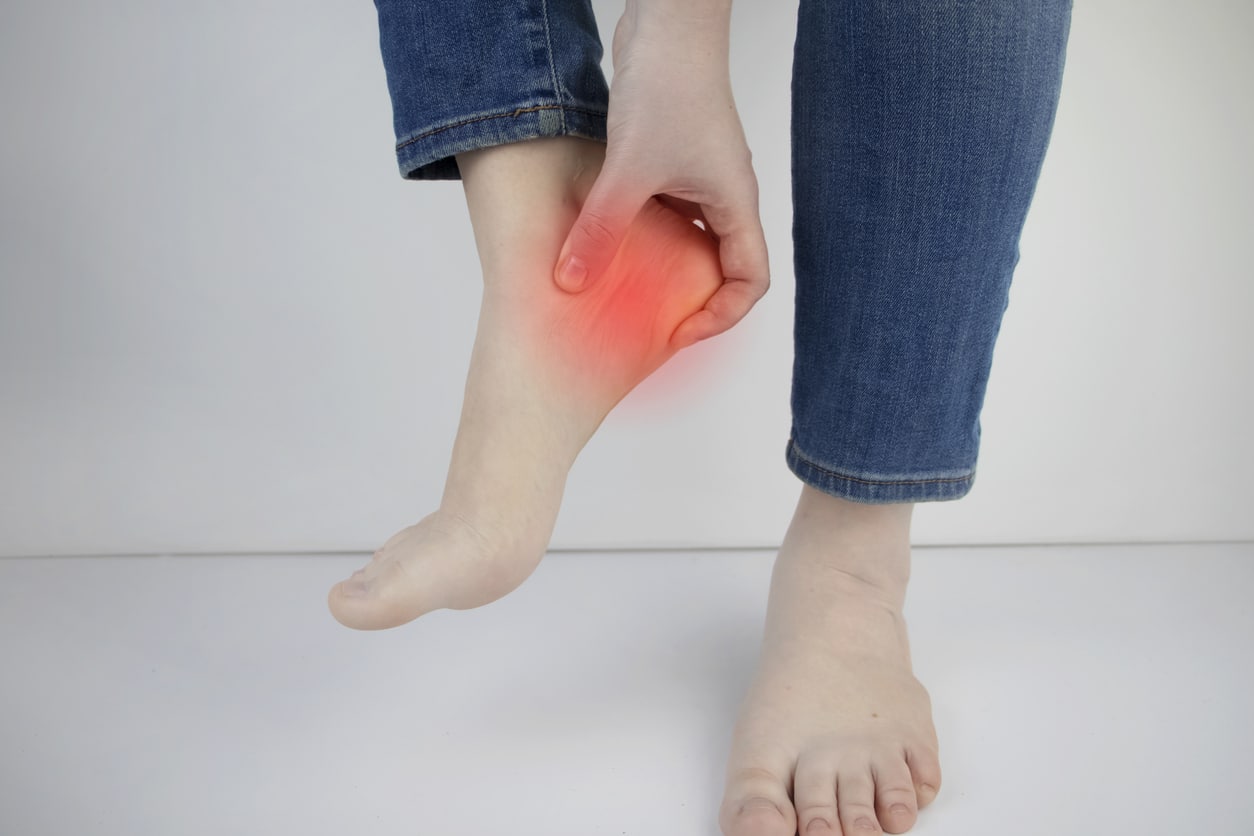By: Dr. David Westmacott, DC
If you know the term Plantar Fasciitis, you have probably had it, or know someone who has.
A Person Suffering From This Condition Will:
- Feel pain under the heel of the foot when they put their weight on it.
- The pain is usually in the front and bottom of the heel, but the pain can be over any position of the bottom of the foot where the fascia is located.
- The pain is the worst with one’s first few steps in the morning or after periods of inactivity.
What is Plantar Fascia?
The plantar fascia functions as a “bowstring” that connects the heel bone to the ball of the foot and toes in order to maintain the arch of the foot. It experiences tension that is approximately 2 times a person’s body weight when the heel lifts off the ground with walking. Increased tension on the planter fascia due to tight calf muscles, flat feet or high arches, prolonged standing or walking on hard surfaces, being over weight, improper warm up, or sudden injury, causes irritation at the attachment of the plantar fascia to the heel bone.
The Injury Cycle Is As Follows:
Micro tears in the fascia’s attachment to the heel bone, due to increased tensile stress, causes inflammation to occur, and dense, fibrotic scar tissue is formed as part of the normal healing process. Scar tissue is a “glue like” substance that is resistant to stretch. The normal elasticity of the fascia is decreased, causing pain and compromising the overall function of the fascia. The fascia can no longer do its job of maintaining the arch of the foot.
Treatment
The key to eliminating Plantar Fasciitis, is to break down the fibrotic scar to restore the normal elasticity and pliability of the fascia. This allows proper arch support and thus normal foot mechanics. Tight calf muscles must also be stretched out to reduce strain on the plantar fascia.
Active Release Therapy, (ART) is a soft tissue treatment system that releases scar tissue from injured muscles, tendons and fascia, and is performed by the practitioner to release the scar tissue at the heel. Tight calf muscles are stretched by the practitioner using a combination of ART combined with deep tissue massage. In order for plantar fasciitis to heal, the scar tissue must be broken down.
Another treatment that is often successful is Shockwave Therapy which has proven to be helpful for many chronic conditions. This therapy uses acoustic waves with high energy peaks that interact with tissue, causing effects such as accelerated tissue repair and cell growth, pain relief, and mobility restoration.
What Else Can I Do?
Switch to low impact activities such as cycling, swimming or deepwater running to reduce stress and irritation of the plantar fascia. Walking through the pain can worsen and prolong the condition. Proper footwear with good arch support and cushioning must be used.
Athletic taping can help speed healing by protecting the fascia from re-injury. Finally, by massaging and stretching the bottom of the foot and calf muscles before getting out of bed each morning, the typical heel pain with the first few steps can be reduced causing less irritation at the heel. The calf muscles should also be stretched 3 to 5 times during the day.
Plantar Fasciitis can be prevented by maintaining the flexibility of the plantar fascia and calf muscles with a regular stretching program. Good quality footwear with arch support and cushioning are essential. Consider talking to your doctor or chiropractor about the benefits of orthotics. At Active Sports Therapy you can speak with your chiropractor about having your feet scanned on our Footmaxx Orthotics machine to help determine if orthotics could be part of your treatment plan.
Help From Active Sports Therapy
The doctors and practitioners of Active Sports Therapy have had great success in the treatment of Plantar Fasciitis. It is essential to be treated for this condition, if you have it or think you may have it, as soon as possible to prevent an easily treated case from becoming a long term, debilitating problem.
*This blog is not intended to officially establish a physician-patient relationship, to replace the services of a trained physician, naturopathic doctor, physical therapist or chiropractor or otherwise to be a substitute for professional medical advice, diagnosis, or treatment.


